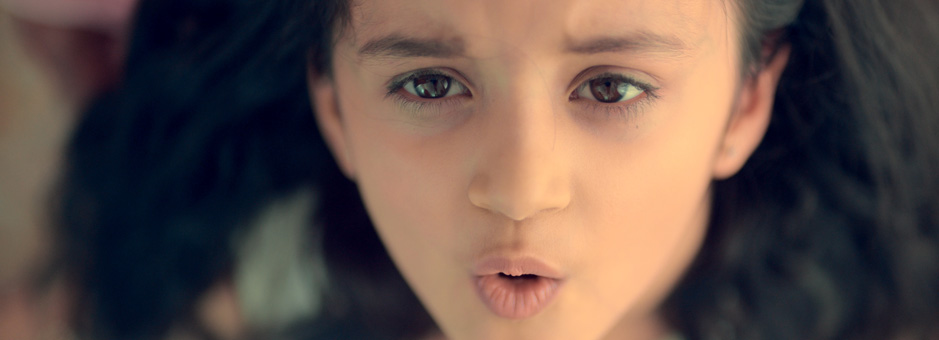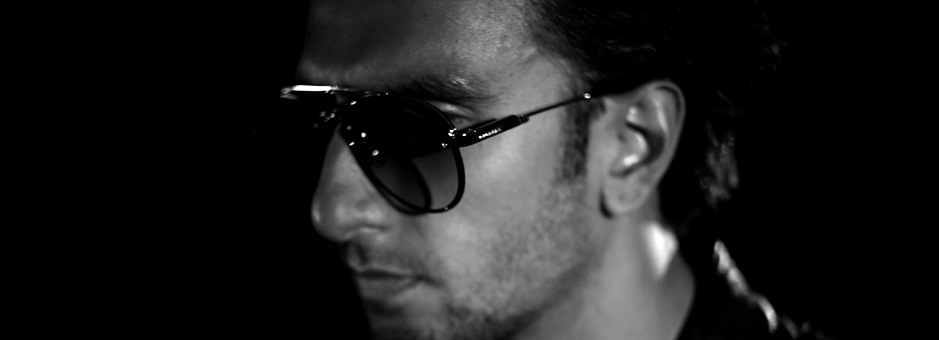Meet The Colourist
Swapnil Patole
Senior Colourist & DI Head of Department, Famous Studios, Mumbai
Swapnil is a senior colourist based in Mumbai. Since starting his career 14 years ago, he has graded a plethora of commercials in all genres and for brands such as L’Oreal, Garnier, McDonalds, Honda and Nivea, to name a few. He has more recently worked on feature films, festival short films and music videos, including a project for SONY Music India.
Today he is Senior Colourist and DI Head of Department (HOD) at Famous Studios in Mumbai.
Having originally studied commerce, what brought you into the world of colour?
Everything started in 2003. I finished my studies and was not too sure which direction I wanted to take for my career. One day a friend, who had just started working for one of the most reputed post-production houses in Mumbai, took me to his new work place: Prime Focus. I was totally new to this and I remember being simply mesmerised by the whole work culture and the look of the studio. I visited the grading suite and, I must say, it was love at first sight. I gazed at the telecine grading suite with multi-monitors all around it, just like a big space ship. From that moment, I knew I wanted to work there. Even though I was clueless about the industry and the technical side of it, I just knew.
A few months on, I was fortunate enough to join Prime Focus and started working as a machine room operator. As I now had a goal, I worked hard, learned and slogged day and night and slowly but surely made my way up from machine room to tape operator, telecine negative loader and telecine assistant to then telecine junior colourist. I finally became a colourist in 2007 when I joined Pixion post-production studio. Since then, I haven’t looked back. To be where I stand today took hard work, dedication, passion and, most importantly, my love for colour grading. I am, today – as Senior Colourist and DI HOD for Famous Studios – a very content soul.
What did you learn from your past jobs that you are grateful for today?
Each day and every new job helps you to learn and become more skillful. It forces you to be better than before, more creative and productive for your clients. I am extremely grateful that every day I work on two to three commercials, which helps me understand rapidly about treatments, palettes, directors, the visions of DOPs and mixing colours to deliver the best possible grades.
Do you see things with a different eye now than when you began?
Yes, my eyes are more analytical now compared to when I started grading. I now understand better visual treatment, the nature of earth and its light, its people, as well as culture and different aspects of life. I read about colour science, started a ‘black book’ for grading reference, followed cinematographers work worldwide and worked with the best technicians from India and overseas. I invested these experiences into my grading craft and my work has been significantly fine tuned over the years. And, for the last few years, Baselight has played a significant part in making my work look sharper.
Could you tell us more about Famous Studios in Mumbai and your role there?
Famous Studios was set up in 1946 and has evolved to become one of the finest post-production houses in India for TV commercials, international broadcast channels, film makers and advertising agencies all around the world.
It is a creative, innovative and experienced studio, which also possesses all the necessary tools and workflows for execution/processing of all types of audiovisual content. With more than seven decades of experience in the industry, trust and flexibility is a given.
With this vast experience and global reputation comes a lot of hardship and responsibility for me as Senior Colourist and DI HOD. I am driven to maintain and build a respectful colour grading (DI) business and workflow platform with a set of clients around the globe.
You switched grading systems in 2016, to Baselight. What advantages have you discovered?
Up until 2015 I had been grading on all kinds of grading hardware and software systems. Then I switched over to Baselight, and since then my experience of grading has become sky high.
For example, with multiple format camera timelines from ALEXA, RED and Canon to Sony A7s or DJI, Baselight handles it beautifully with colour spaces and real-time playback. This gives me spectacular speed and flexibility to grade and finish jobs in time. And this is all mostly because it is so customisable.
I use a Blackboard panel because of its design and interface and, with Baselight, it allows me to work for long hours without being exhausted. Lets say a colourist can usually work eight hours a day – Baselight lets me work 12. Clients in India adore Baselight as it is better than any other grading system and it can handle bigger jobs in just a click of the fingers.
It has many advantages, and to mention just a few is not fair of me as a colourist. Having said that, what I love most about Baselight is the colour science behind it and how smoothly it operates with the colourist’s vision and the control of the Blackboard to achieve a look for a film. On top of this, there are constant Baselight updates and upgrades for its colour spaces, the plugins and the keying and shape tracking tools, which somehow make everything seamless. There is no option for me but to grade all my jobs on Baselight.
As a colourist I have raised my bar by grading a couple of feature films. This trained me to create and visualise colour palettes in a different technical and visual way to how I would on a commercial grade.
When it comes to grading a commercial, there is more scope to experiment with colours and it can be really creative. Feature films require more or less constant contrast levels, but can have multiple colour tones. And when it comes to music videos, it’s absolute fun and you can go a little mad with grade options.
Having said that, as an artist I love all genres of film to grade because each has its own character and it is very satisfying and pleasurable to see my colour grade on prestigious films.
Personally, as a colourist, visualyl stunning images are more addictive than technical aspects of colour grading. I always try to grade in an eccentric way, as I have always believed that your work as an artist is more recognised when you approach it differently, which has also brought me visibility and appreciation from industry technicians and film makers.
As an artist, I do not strive to be superior to other colourists with my grades, as I value artisans and respect all colourists around the globe.
Technology is one prime factor in all kind of industries to be productive and deliverable. The colourist journey goes hand in hand with technology.
In my opinion, colour grading methods haven’t changed from the celluloid world to the digital world of colour. It is the power of grading systems that have made a giant leap from limited layers, shapes and keyers to unlimited layers, 3D tracking, multiple operations in the timeline along with render speeds. This is remarkable. As one of the roles of a colourist is to meet daily deadlines, reliable technology is a must. Baselight has definitely made the process of colour grading more accessible, flexible and faster, with the instantaneous nature of its technology.
How do you like to work with the cinematographer?
My working culture is staggeringly varied when it comes to the cinematographers I am associated with, and the new ones too. If they need my involvement from pre-production with regards to colour reference or making LUTS for projects, I always deliver my services to them. If the cinematographer involves me directly in post I still deliver them what they are expecting me to do. I don’t prefer or follow any specific method to work with DOPs, I just blend with their requirements and provide them with a comfort zone.
Which work are you the most proud of?
I do not button down my jobs, as they are all equivalent and precious to me. All the work I am associated with is close to my heart and very dear to me.
What advice would you give to a junior colourist starting his/her career today?
Follow your heart, learn your surroundings with nature and implement those in your work. Learning grading systems, hardware and software won't make you a colourist, but learning the skills of colour grading with time, passion, dedication and patience will make you become a respectful colourist. It’s not always necessary to please everyone with your work, so learn to let it go when it happens.
Who would you ask to colour grade your own movie? Or would you do it?
I am not really keen or interested in making my own movie in the future. But let’s say hypothetically if I was making one, I would prefer to grade it with someone who is grading it because he/she loves colour, and with the same passion that drives me.
What do you dream to achieve by the end of your career?
I haven’t planned what I will do once my career comes to an end, but I would love to see myself making benchmarks with wild bold colours, and to see my grades on films and advertisements become a reference for future colourists and technicians around the world.
Join In
If you want to participate in our MTC programme, we'd love to hear from you. Contact:
Alexa Maza
e: [email protected]

“As a colourist, visually stunning images are more addictive than technical aspects of colour grading. I always try to grade in an eccentric way, as I have always believed that your work as an artist is more recognised when you approach it differently.”
Details
Colourist: Swapnil Patole
Role: Senior Colourist & DI Head of Department
Web: Famous Studios








